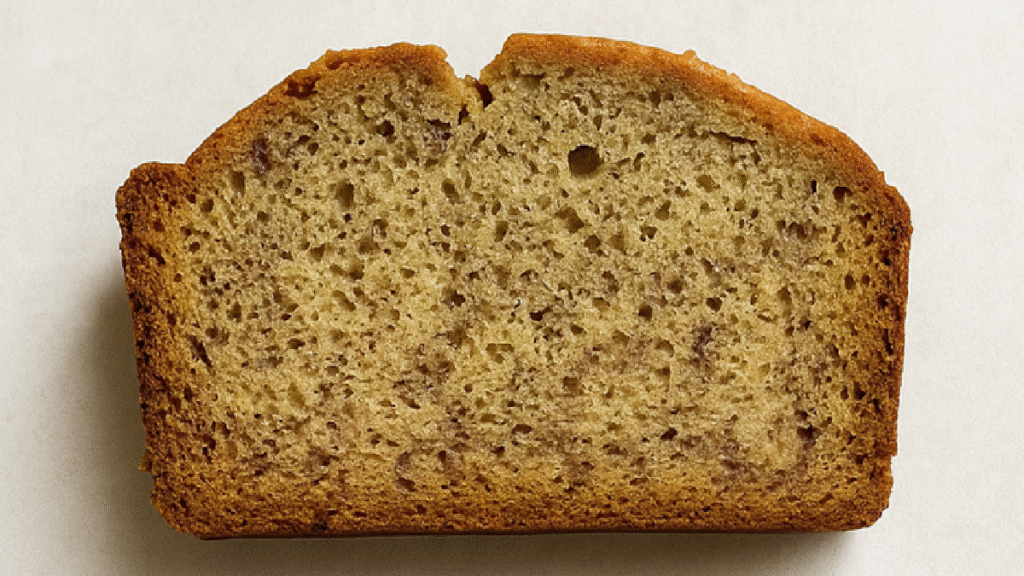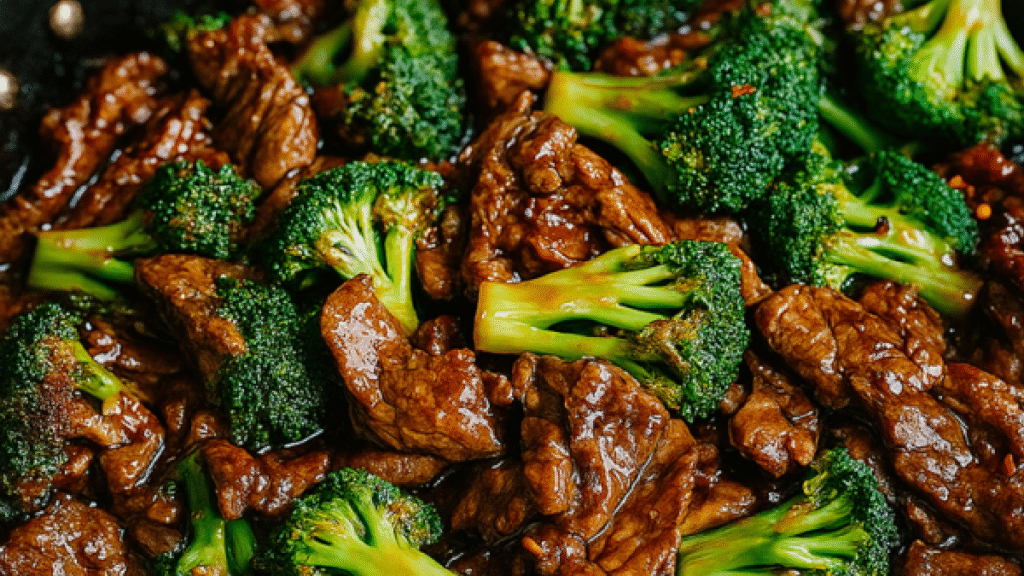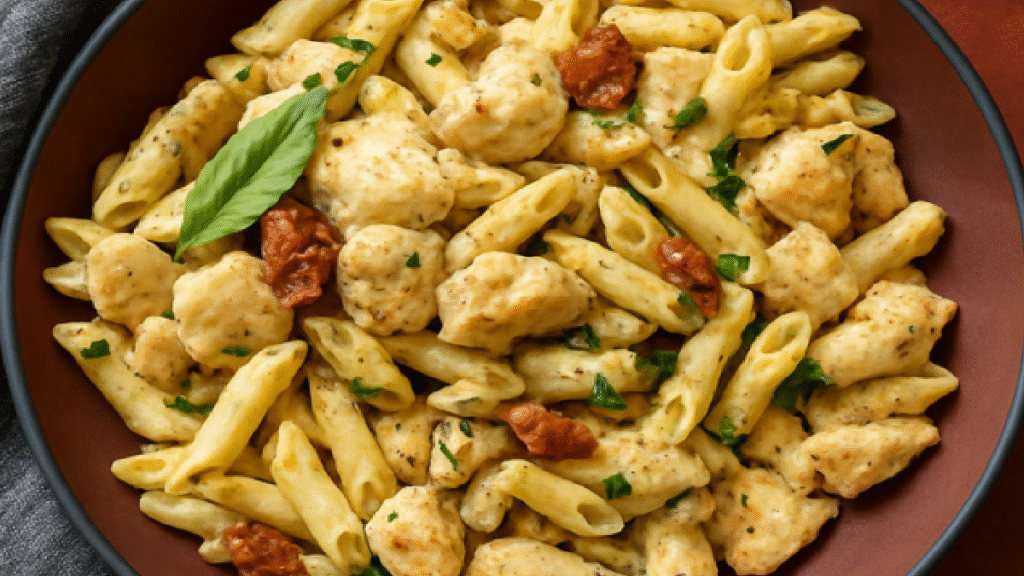There’s something special about a warm, freshly baked loaf of moist banana bread that feels like a hug from the inside out. For over a decade, our banana bread recipe has been a favorite among thousands, with people making it every day.
This easy banana bread recipe has stood the test of time, and its popularity is a testament to its simplicity and deliciousness. In this article, we’ll walk you through the steps to create this mouthwatering treat, sharing tips and tricks along the way.
Key Takeaways
- A simple and delicious banana bread recipe that’s perfect for any occasion.
- Tips for achieving the perfect moist banana bread every time.
- Variations on the classic recipe to suit your taste preferences.
- Step-by-step instructions for baking the perfect loaf.
- Insights into what makes this recipe so beloved by thousands.
The Magic of Homemade Banana Bread
There’s something truly special about baking homemade banana bread that fills your home with warmth and comfort. The beauty of this banana bread recipe is that you don’t need a fancy mixer, making it accessible to everyone. The simplicity of the ingredients and the ease of preparation are just a few of the banana bread benefits that make it a beloved treat.
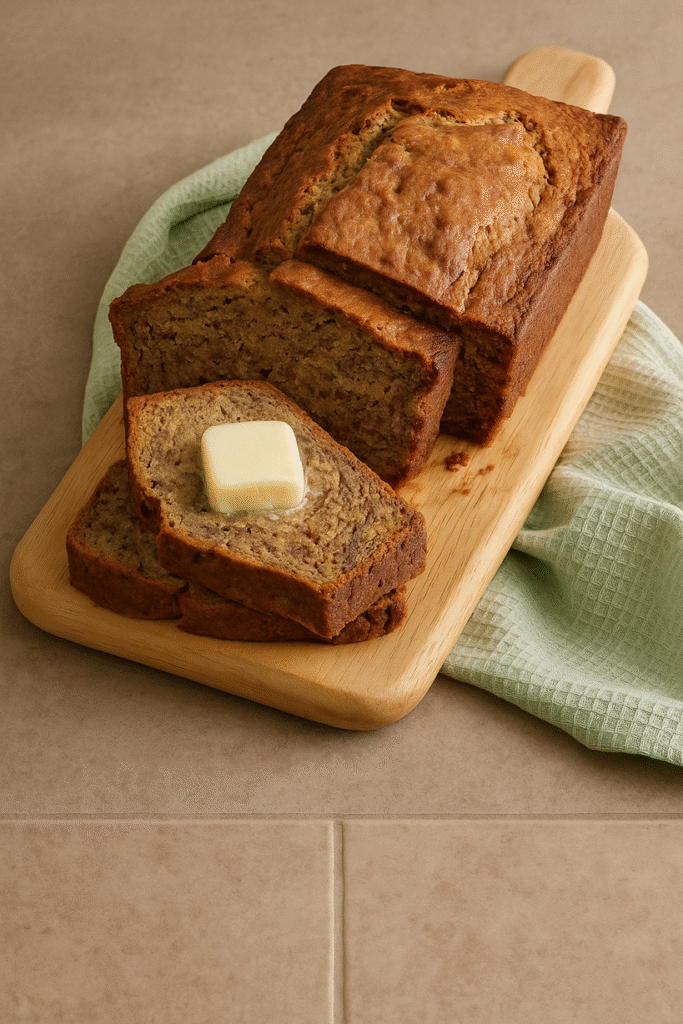
Baking banana bread at home allows for flexibility in ingredients, enabling you to adjust the recipe to your taste preferences or dietary needs. Whether you’re looking to reduce sugar, add nuts, or incorporate other flavors, homemade banana bread is highly adaptable. This flexibility is a significant advantage, making it a versatile option for various occasions.
The process of making banana bread is also therapeutic, providing a calming and fulfilling experience. As you mix and bake, your kitchen becomes filled with the delicious aroma of banana bread, creating a welcoming atmosphere. This sensory experience is part of the banana bread benefits, enhancing the overall enjoyment of the baking process.
In summary, homemade banana bread offers numerous benefits, from its ease of preparation to its flexibility and the joy it brings. Whether you’re a seasoned baker or a novice, this recipe is sure to become a favorite.
Essential Ingredients for Perfect Banana Bread
Crafting the perfect banana bread starts with selecting the right ingredients. The quality and characteristics of these ingredients can significantly impact the final product’s taste, texture, and overall appeal.
Choosing the Right Bananas
The best bananas to use for banana bread are those that are overripe. These bananas are sweeter and softer, making them easier to mash and blend into the batter. Using ripe bananas is crucial for achieving the right flavor and texture in your banana bread.
Flour Options and Their Effects
The type of flour used can affect the texture and structure of the banana bread. All-purpose flour is a popular choice, but you can also experiment with whole wheat flour for a denser, nuttier flavor. For a gluten-free version, consider using almond flour or a gluten-free flour blend.
Sweeteners and Their Impact
While bananas provide natural sweetness, additional sweeteners like sugar or honey are often added to enhance the flavor. The choice of sweetener can impact the bread’s moisture content and flavor profile. For a healthier alternative, you can explore options like reducing sugar content or using natural sweeteners.
Fats: Butter vs. Oil
The choice between using butter or oil in banana bread affects its moisture and flavor. Butter adds a rich, tender crumb, while oil can result in a moist, tender loaf. You can choose one or a combination of both, depending on your preference.
Equipment You’ll Need
You don’t need a lot of fancy equipment to make great banana bread. The essentials are straightforward and likely already in your kitchen.
Loaf Pans and Alternatives
A standard 9×5-inch loaf pan is ideal for banana bread. If you don’t have one, you can use a similar-sized pan or even a muffin tin for banana bread muffins. Ensure your pan is greased properly to prevent sticking.
Mixing Tools and Techniques
For mixing, you’ll need a large bowl, a fork to whisk eggs, and a sturdy spoon or spatula to mix the batter. A fork and spoon are all you need; no fancy mixer is required. Simply mash the bananas with a fork, whisk the eggs, and then mix everything together in the bowl.
The Ultimate Banana Bread Recipe Step-by-Step
Making banana bread from scratch is easier than you think, and we’re here to walk you through it. With a simple banana bread recipe, you’ll be on your way to baking a delicious loaf.
Preparing Your Ingredients
Before you start mixing, it’s essential to prepare your ingredients. This includes mashing ripe bananas, measuring out flour, and cracking eggs. Use high-quality ingredients to ensure the best flavor. Preheat your oven to 350°F (175°C) and butter an 8×4-inch loaf pan, as per our baking instructions.
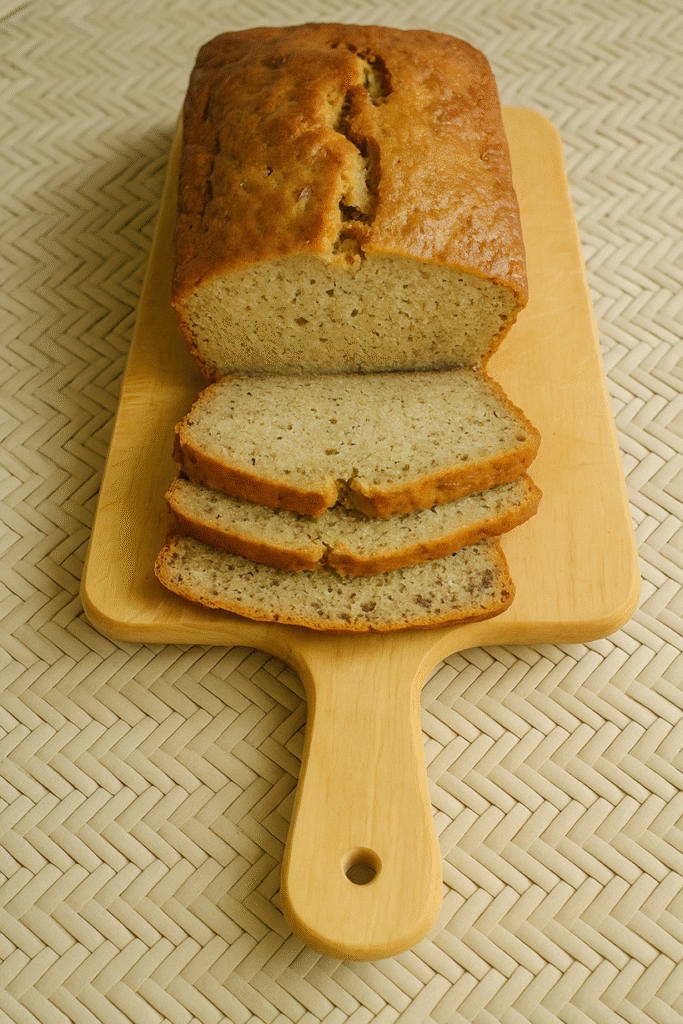
Mixing the Batter Properly
Mixing the batter is a crucial step in making banana bread. Combine dry ingredients like flour, sugar, and spices in one bowl, and wet ingredients like eggs, melted butter, and mashed bananas in another. Gently fold the wet and dry ingredients together until just combined, being careful not to overmix the batter. As mixing batter is an art, ensure you don’t overdo it.
“The key to a tender crumb is in the gentle mixing of the batter.”
Baking Instructions and Timing
Pour the mixed batter into your prepared loaf pan and smooth the top. Bake in the preheated oven for about 55-60 minutes, or until a toothpick inserted into the center comes out clean. Keep an eye on your banana bread during the last 15 minutes to prevent over-browning. Following these baking instructions will yield a perfectly baked loaf.
By following this banana bread recipe step-by-step, you’ll achieve a moist and delicious loaf. Enjoy the process and the delightful outcome!
The Science Behind Moist Banana Bread
The perfect banana bread is a culmination of the right ingredients and the science that governs their interaction. Achieving that ideal moist texture is not just about following a recipe; it’s about understanding how different components work together.
Role of Bananas in Moisture
Bananas are the star ingredient in banana bread, and their ripeness plays a crucial role in the final product’s moisture. Overripe bananas, in particular, are sweeter and softer, making them perfect for baking. They contain more reducing sugars, which caramelize during baking, enhancing the bread’s flavor and moisture.
As
“The riper the banana, the better it is for baking.”
This is because ripe bananas have a higher moisture content and are easier to mash, distributing their moisture evenly throughout the batter.
Fat Content and Texture
The type and amount of fat used in banana bread significantly affects its texture. Using butter adds flavor, while oil can make the bread more moist. The choice between the two, or a combination, can be tailored to achieve the desired texture.
A higher fat content generally results in a moister loaf. However, it’s a balance; too much fat can make the bread overly dense. Understanding this balance is key to achieving that perfect, moist banana bread.
Common Mistakes to Avoid When Baking Banana Bread
The journey to a delicious homemade banana bread is often marred by avoidable errors. To ensure your baking success, it’s crucial to be aware of the common pitfalls that can lead to less-than-desirable results.
Overmixing Issues
One of the most significant mistakes bakers make is overmixing the batter. Overmixing can result in a dense and tough banana bread, which is the opposite of the moist and tender crumb most bakers aim for. To avoid this, mix your wet and dry ingredients separately and gently fold them together until just combined. Stop mixing as soon as the ingredients are cohesive, and avoid using electric mixers for this final step.
Baking Temperature Errors
Baking temperature significantly affects the final texture and appearance of your banana bread. Baking at too high a temperature can cause the outside to burn before the inside is fully cooked, while too low a temperature can result in a bread that’s undercooked or soggy. Ensure your oven is accurately calibrated, and consider using an oven thermometer to verify the temperature.
Ripeness Problems
The ripeness of your bananas is crucial for the flavor and texture of your banana bread. Using bananas that are not ripe enough can result in a bread that’s bland and dense. On the other hand, overly ripe bananas can make the bread too wet. Aim for bananas with plenty of brown spots on the skin, as they are sweet and will mash well, providing the right consistency and flavor.
By being mindful of these common mistakes—overmixing, incorrect baking temperature, and using bananas of the wrong ripeness—you can significantly improve your banana bread baking skills. Happy baking!
Classic Banana Bread Recipe Variations
From chocolate chip to French-inspired, explore the diverse world of banana bread variations that can elevate this classic comfort food into a whole new culinary experience. The beauty of banana bread lies in its versatility, allowing bakers to experiment with a myriad of ingredients to create unique flavor profiles.
Chocolate Chip Banana Bread
Adding chocolate chips to your banana bread is a simple yet effective way to introduce a new dimension of flavor. The sweetness of the chocolate complements the natural sweetness of the bananas, creating a delightful taste experience. To incorporate chocolate chips, simply fold them into the batter after you’ve mixed the wet and dry ingredients together. Dark, milk, or white chocolate chips can be used based on your preference.
Nutty Additions
Nuts not only add texture but also a rich, nutty flavor that pairs beautifully with bananas. Walnuts and pecans are popular choices, but feel free to experiment with other nuts like almonds or hazelnuts. To incorporate nuts, chop them finely and fold them into the batter, much like you would with chocolate chips. The addition of nuts can also enhance the nutritional profile of your banana bread.
Spiced Versions
Spices can dramatically change the character of your banana bread. Adding a pinch of cinnamon, nutmeg, or cardamom can give your bread a warm, aromatic flavor. These spices complement the sweetness of the bananas and can add a cozy, comforting element to your bread. Start with a small amount and adjust to taste, as the potency of spices can vary.
French-Inspired Variations
For a sophisticated twist, consider adding French-inspired elements to your banana bread. This could include ingredients like frangelico (hazelnut liqueur) or incorporating French vanilla. You can also top your banana bread with a crumble made from butter, flour, and sugar for a delightful streusel topping, reminiscent of French patisserie.
These variations show that banana bread is a canvas waiting for your creative touch. Whether you’re in the mood for something classic and comforting or adventurous and new, there’s a banana bread variation out there for you.
Healthier Banana Bread Alternatives
For those looking to indulge in banana bread without the guilt, there are several healthier alternatives to explore. Making a few simple changes to the traditional recipe can significantly enhance its nutritional profile without sacrificing flavor.
Reducing Sugar Content
One of the easiest ways to make banana bread healthier is by reducing the sugar content. When using very ripe bananas, you can cut down the sugar to as little as 1/2 cup. Very ripe bananas are sweeter and will add natural sweetness to your bread, reducing the need for additional sugar.
Whole Grain Versions
Switching from all-purpose flour to whole grain flour is another effective way to boost the nutritional value of your banana bread. Whole grain flour contains more fiber, vitamins, and minerals compared to refined flour. You can either use 100% whole wheat flour or a blend of whole wheat and all-purpose flour to achieve a better texture and flavor.
Vegan Banana Bread
For those following a vegan diet, banana bread can easily be adapted by replacing eggs and dairy products. Use flax eggs or mashed banana as a binding agent instead of eggs, and opt for plant-based milk and vegan butter or oil. These substitutions not only make the bread vegan-friendly but can also enhance its moisture content.
Some other tips for making healthier banana bread include using coconut sugar or honey as alternatives to refined sugar, and adding nuts or seeds for extra nutrition and texture. For more ideas on healthy recipes, you might enjoy exploring other nutritious dishes that incorporate wholesome ingredients.
By implementing these changes, you can enjoy a delicious and healthier banana bread that aligns with your dietary preferences and needs.
Storing and Freezing Your Banana Bread
To keep your banana bread moist and delicious, it’s crucial to store it correctly. Proper storage not only maintains freshness but also extends the shelf life of your baked goods.
Counter Storage Tips
When storing banana bread on the counter, it’s essential to keep it wrapped well to prevent drying out. You can use plastic wrap or aluminum foil for this purpose. Wrapped well, the banana bread will keep at room temperature for 4 days. It’s also important to keep it away from direct sunlight and heat sources.
Refrigeration Methods
For longer storage, consider refrigerating your banana bread. Wrap it tightly in plastic wrap or aluminum foil and place it in an airtight container to maintain freshness. Refrigeration can extend the shelf life up to a week. As noted by food preservation experts, “Refrigeration slows down the staling process, keeping your banana bread fresh for longer.”
Freezing for Longevity
For even longer storage, freezing is a great option. Wrap your banana bread tightly in plastic wrap or aluminum foil and then place it in a freezer-safe bag. Frozen banana bread can last up to 3 months. When you’re ready to eat it, simply thaw it at room temperature or reheat it in the microwave. It’s worth noting that some foods don’t freeze well, as highlighted in this article on foods that shouldn’t be frozen for too.
Creative Serving Suggestions
Elevate your banana bread experience with these creative serving suggestions. Banana bread is a versatile treat that can be enjoyed in various ways, from simple snacks to elaborate desserts.
Accompaniments and Toppings
Enhance your banana bread with a variety of accompaniments and toppings. You can drizzle it with maple syrup for a sweet treat or add some fresh blueberries for extra flavor and nutrition. Sprinkling demerara sugar on top can add a delightful crunch and a touch of sweetness. For a more decadent experience, try pairing it with a scoop of vanilla ice cream or whipped cream.
For a different twist, consider serving your banana bread with a side of tuna tartare or a fruit salad for a refreshing contrast.
Presentation Ideas for Special Occasions
When it comes to special occasions, presentation matters. You can turn your banana bread into a stunning dessert by slicing it, toasting it lightly, and serving it with a dollop of cream and a sprinkle of cinnamon. For a more elegant look, consider layering slices of banana bread with cream cheese frosting to create a banana bread cake.
These creative serving suggestions will help you turn a simple loaf of banana bread into a memorable dessert or snack, perfect for any occasion.
The History and Cultural Significance of Banana Bread
Banana bread, a beloved treat in many parts of the world, has its origins firmly planted in the heart of American cuisine. For more on comforting baked goods, you can explore similar recipes that have become staples in various cultures.
Banana bread’s history is closely tied to the Great Depression and World War II, when resourceful homemakers sought ways to use overripe bananas rather than waste them. This practical approach to cooking not only helped in reducing food waste but also resulted in a delicious, moist bread that quickly gained popularity.
Origins in American Cuisine
The rise of banana bread in American cuisine can be attributed to several factors, including the increased availability of bananas and the influence of European baking traditions. Here are some key points in its origins:
- The introduction of bananas to the American mainland and their increasing popularity.
- The influence of European immigrants who brought their baking techniques to America.
- The economic necessity during the Great Depression that led to creative uses of available ingredients.
Banana Bread Around the World
While banana bread is deeply rooted in American cuisine, its appeal has spread globally, with various cultures adapting the recipe to their local tastes and ingredients. For instance:
- In the Caribbean, banana bread is often infused with rum or other local spirits.
- In Southeast Asia, versions may include coconut or pandan for a unique flavor.
- In health-conscious cultures, banana bread is made with alternative sweeteners and flours.
This global adaptation not only showcases the versatility of banana bread but also highlights its cultural significance as a comfort food that transcends borders.
Nutritional Information and Benefits
The nutritional profile of banana bread is a complex mix of various ingredients, each contributing to its overall health impact. While it’s often considered a treat, understanding its components can help in making healthier choices.
Caloric Content and Macronutrients
Banana bread’s caloric content largely depends on the recipe, particularly the amount of sugar and fat used. On average, a slice can range from 150 to 300 calories. It’s also a source of carbohydrates, with some protein and fat. The macronutrient breakdown can vary, but it generally contains a mix of simple and complex carbohydrates, along with some dietary fiber, thanks to the bananas and potentially whole grains if used.
Nutritional Benefits of Bananas
Bananas, the primary ingredient, are a good source of potassium, vitamins, and minerals. They contribute to the bread’s nutritional value by adding dietary fiber, vitamin C, and vitamin B6. The potassium content is particularly noteworthy, as it can help with heart health and blood pressure management.
Dietary Considerations
For those with dietary restrictions or preferences, banana bread can be adapted. Using whole grain flour increases the fiber content, while reducing sugar or using natural sweeteners can lower the glycemic index. Additionally, substituting fats or using vegan alternatives can make it suitable for various dietary needs.
In conclusion, while banana bread is often seen as an indulgent treat, it also has nutritional benefits, particularly when made with healthier ingredients and consumed in moderation.
Troubleshooting Your Banana Bread
Troubleshooting is a crucial step in mastering the art of banana bread baking. Even with the best recipes, issues can arise that affect the final product’s quality. Understanding how to address these problems is key to consistently baking delicious banana bread.
Sunken Middle Solutions
A sunken middle in banana bread can be disappointing. This issue often results from underbaking or overmixing the batter. To avoid this, ensure your bread is fully baked by checking it with a toothpick; if it comes out clean, it’s done. For more insights on perfecting your baking technique, you might find visiting other baking resources helpful.
Too Dry or Too Moist Fixes
The moisture level in banana bread is crucial. If your bread turns out too dry, it might be due to overbaking or using bananas that were not ripe enough. Conversely, too much moisture can result from using overly ripe bananas or not baking the bread long enough. Adjusting your baking time and the ripeness of your bananas can help achieve the perfect moisture balance.
Uneven Baking Remedies
Uneven baking can lead to parts of the bread being overcooked while others are undercooked. To remedy this, ensure your oven is at the correct temperature, and consider rotating your loaf pan halfway through the baking time. If the outside of the loaf is browned but the center is still wet, loosely tent the loaf with foil and continue baking until it’s fully cooked.
Conclusion
With the comprehensive guide provided, you’re now equipped to bake a mouth-watering banana bread at home. From selecting the right bananas to exploring various recipe variations, every step has been detailed to ensure a delightful baking experience.
By following the tips and recipes shared, you’ll be able to create a moist and delicious banana bread that suits your taste preferences. Whether you’re a beginner or an experienced baker, this banana bread recipe is sure to become a favorite.
So, get baking and enjoy the delightful aroma of freshly baked banana bread wafting through your kitchen. Experiment with different variations, and don’t be afraid to try new ingredients to make the recipe your own.
FAQ
What type of bananas are best for making banana bread?
Overripe bananas are ideal for banana bread, as they are sweeter and softer, making them easier to mash and blend into the batter.
Can I use other types of flour instead of all-purpose flour?
Yes, you can experiment with different types of flour, such as whole wheat, oat, or almond flour, to create different flavor profiles and textures.
How do I prevent overmixing when making banana bread?
To avoid overmixing, gently fold the wet and dry ingredients together until just combined, and avoid using electric mixers for extended periods.
Can I substitute butter with oil in banana bread recipes?
Yes, you can use oil instead of butter, but keep in mind that it may affect the flavor and texture of the bread.
How should I store banana bread to keep it fresh?
Store banana bread at room temperature, wrapped in plastic wrap or aluminum foil, or freeze it for longer storage.
Can I make banana bread without eggs?
Yes, you can make vegan banana bread by using egg substitutes like flaxseed or applesauce.
Why did my banana bread turn out dry?
Dry banana bread can result from overbaking, using unripe bananas, or not enough fat content.
How can I achieve a moist banana bread?
To make moist banana bread, use overripe bananas, don’t overmix, and ensure the right balance of fat content.
Can I add nuts or chocolate chips to my banana bread?
Yes, adding nuts or chocolate chips can enhance the flavor and texture of your banana bread.
How do I freeze banana bread?
Wrap cooled banana bread tightly in plastic wrap or aluminum foil and place it in a freezer-safe bag to freeze.
What are some creative ways to serve banana bread?
Try serving banana bread with cream cheese frosting, topped with nuts or chocolate shavings, or as a base for French toast.
Is banana bread a healthy snack option?
While traditional banana bread can be high in sugar and calories, healthier alternatives using whole grain flour and reduced sugar can make it a relatively healthy option.
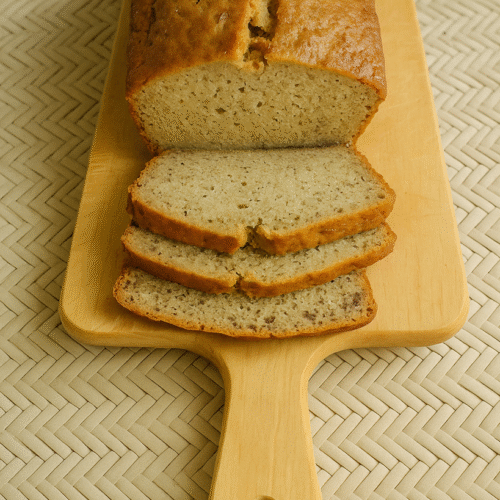
Banana Banana Bread Recipe
Ingredients
- 2 cups all-purpose flour
- 1 teaspoon baking soda
- ¼ teaspoon salt
- ¾ cup brown sugar
- ½ cup butter
- 2 large eggs beaten
- 2 ⅓ cups mashed overripe bananas
Instructions
- Preheat oven to 350°F (175°C). Lightly grease a 9×5-inch loaf pan.
- Mix dry ingredients: In a large bowl, combine flour, baking soda, and salt.
- Cream butter and sugar: In another large bowl, beat brown sugar and butter until smooth using an electric mixer.
- Add eggs and bananas: Stir in beaten eggs and mashed bananas until well blended.
- Combine wet and dry: Stir the banana mixture into the flour mixture until just combined. Do not overmix.
- Bake: Pour the batter into the prepared loaf pan. Bake for about 60 minutes, or until a toothpick inserted into the center comes out clean.
- Cool: Let the bread cool in the pan for 10 minutes, then transfer to a wire rack to cool completely.
Notes
Pro Tips
- Use ripe bananas (yellow with brown spots) for maximum flavor.
- Mash bananas easily with a fork.
- Adding a teaspoon of vanilla extract or a handful of chopped walnuts or chocolate chips is a delicious variation!
How to Store
- Room temperature: Keep in an airtight container with paper towels above and below the bread, for up to 4 days.
- Freezing: Wrap in plastic wrap and foil. Freeze whole or in slices for up to 4 months. Thaw overnight before serving.
Nutrition (Per Serving)
- Calories: 231 kcal
- Fat: 9g
- Carbs: 35g
- Protein: 4g

